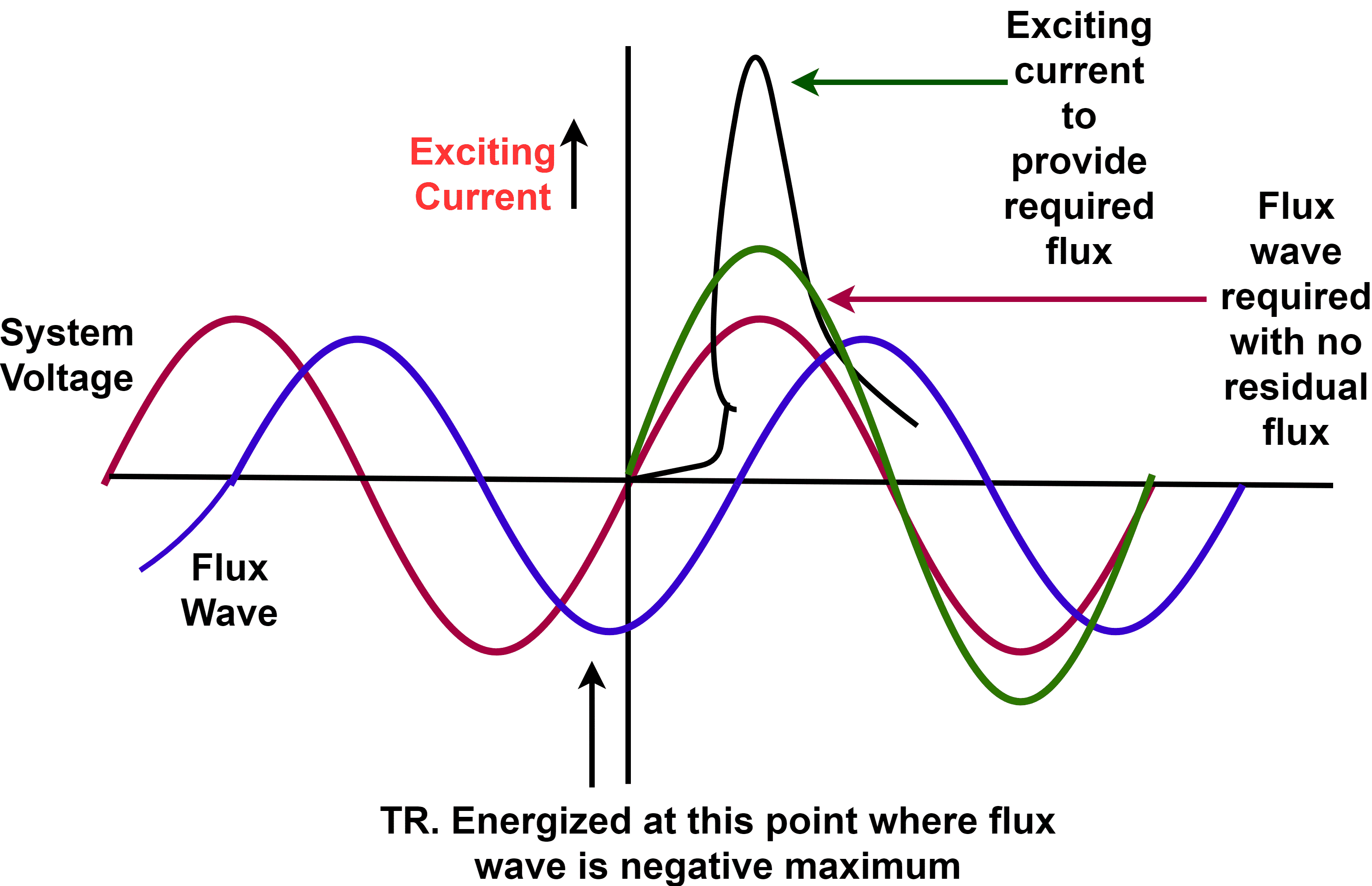What is Exciting current?
The exciting current in the transformer produces the magnetic flux in the core. When energizing transformer at no load, transformer draws primary current which has two components – exciting current and loss current component. The disadvantage of a large exciting current is more losses in the transformer, and thus transformer efficiency deteriorates.
The exciting current in the transformer remains fairly constant whether the transformer is at load or no load. The main purpose of the exciting current is to generate flux in the transformer.

The magnetic flux produced by the primary winding must perfectly link to the primary and secondary winding of the transformer. However, all the flux produced by the primary does not link with the winding. And some part of the flux gets lost. The loss of the flux in the core is the main reason for drawing a large exciting current.
With the loss of flux, a leakage reactance is introduced in the series of winding resistance. As a result, the primary induced EMF reduces, and to maintain the same flux, the transformer draws more magnetizing current. Small rating transformers( 1.5 kVA or less) typically draw 5-10 % of full load current as an excitation current and large rating transformers draws 0.5% of the full load current.
Reasons of large exciting current
The followings are the reasons for the large exciting current in the transformer.
- The core material of the transformer is a highly permeable material. The high permeable material causes magnetic flux lines to concentrate in the core material. If the quality of the core material is poor, the primary winding draws more current to produce the required magnetic flux.
- A smaller cross-section area leads to an increase of exciting current.
- If fewer primary turns are selected to reduce the size of the transformer to reduce the cost, it will cause an increase in excitation current.
Disadvantages of large exciting current
- The use of poor core material and the use of fewer turns in the primary winding is the main cause of the exciting current increase. The large exciting current causes more hysteresis loss. The increased magnetic field with an increase of exciting current leads to increased core loss.
- The core saturation may happen, which further causes distortion in the output voltage. The harmonic content in the output increases and power quality gets deteriorated.
- The large exciting current causes higher system losses.
- The large exciting current causes heating and insulation of the transformer is apt to fail.
- No Load Losses in Transformer
- What is the difference between no-load, exciting, and leakage current in a power transformer?
- Single Phase Transformer and its Applications
- Copper Loss In Transformer
- Efficiency of Transformer
2 thoughts on “What is the disadvantage of large exciting current in a transformer?”